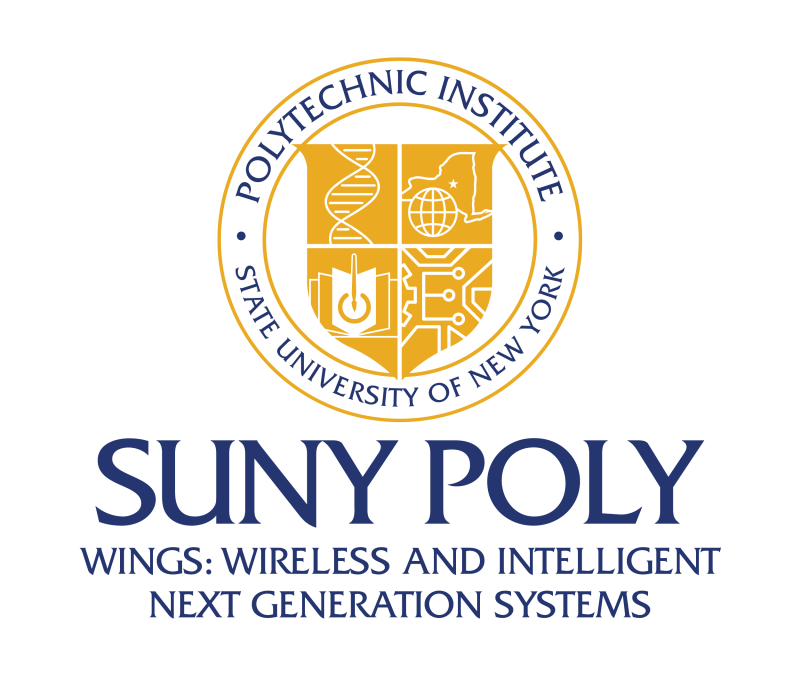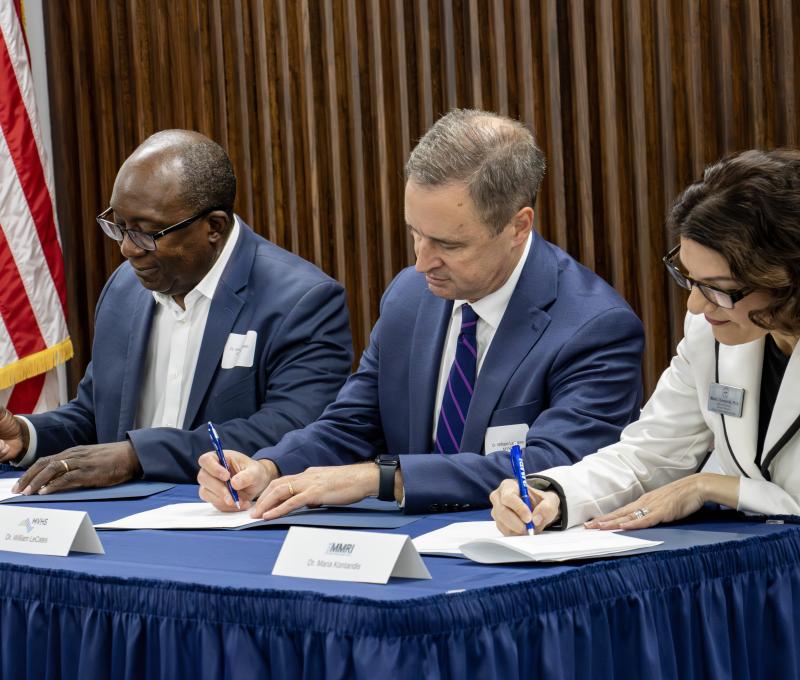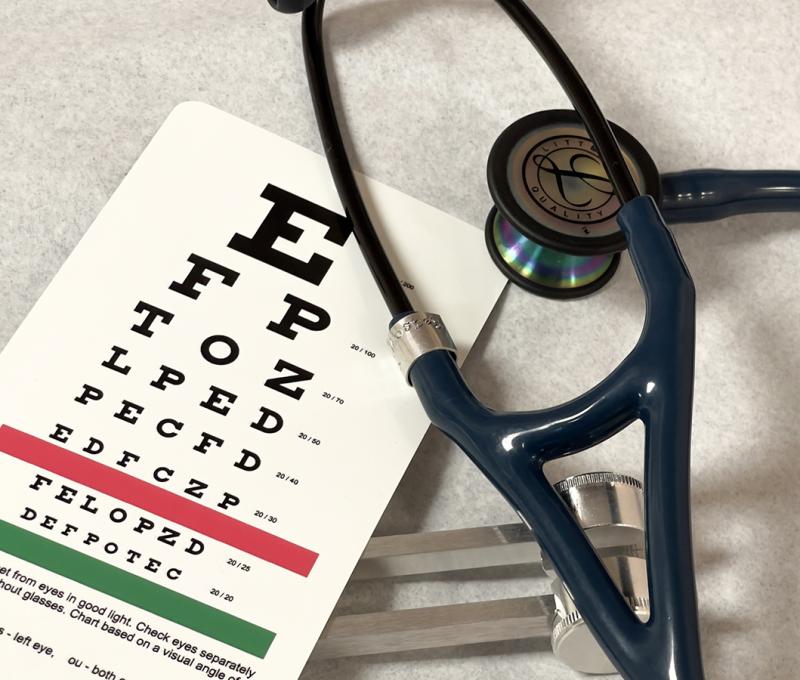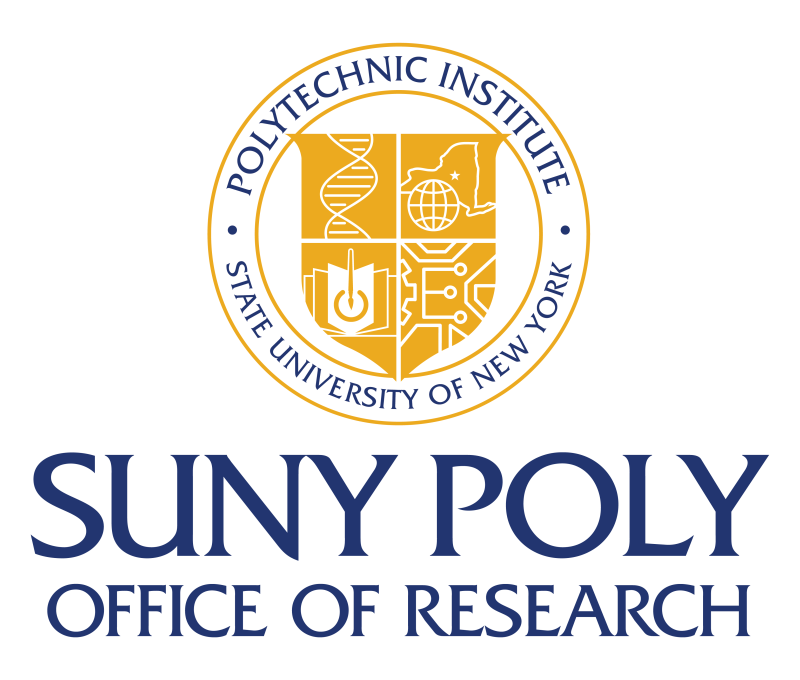News Release: SUNY Poly Professors Awarded $320,000 from the National Institute of General Medical Services to Support Alzheimer’s Disease-Related Research

For Release: Immediate – July 6, 2021
Contact: Steve Ference, Director of University Communications | (518) 429-7742 | sference@sunypoly.edu
Development of RNA-focused Switching Mechanism Being Optimized for
Better Understanding of the Origins of Alzheimer’s Disease
ALBANY, NY – SUNY Polytechnic Institute (SUNY Poly) announced today Interim Dean of the College of Nanoscale Science and Engineering Dr. André Melendez and Head of Nanobioscience Dr. Scott Tenenbaum are receiving $320,000 from the National Institute of General Medicine Sciences of the National Institutes of Health.
The grant will support RNA-focused research in which the research team, with SUNY Poly student participation, seeks to develop a switching mechanism which is attached to messenger RNA. Called sxRNA, this molecular tool enables the research team to mark cells in the body that could be involved in the processes that lead to Alzheimer’s disease, allowing them to be monitored in real time to further increase understanding of the processes involved in this disease that, according to the Mayo Clinic, impacts approximately 5.8 million Americans over the age of 65.
“Year after year, more Americans receive the heartbreaking diagnosis of Alzheimer’s disease, with families, businesses and communities forced to cope with the devastating impact it carries,” Congressman Paul Tonko said. “I have been pushing in Congress for years now to deliver federal resources that will put the wind at the backs of our incredible scientists, researchers and institutions working to understand Alzheimer’s and dementia in the hope that we may one day find a cure. My congratulations and deepest gratitude to Drs. Melendez and Tenenbaum and to the whole team at SUNY Polytechnic for this well-deserved award. Your vital work will impact countless lives and shed a little more light of hope where it is sorely needed.”
“I am thankful to receive this NIGMS award which supports research that might someday allow us to ultimately ‘turn on’ genes that may be defective in a particular disease process, or ‘turn off’ genes which may be contributing to diseases, such as Alzheimer’s,” said Dr. Melendez. “While we focus on ways to limit the production of inflammatory mediators that may exacerbate the Alzheimer’s disease process, we are thrilled that this impactful research also provides an opportunity for SUNY Poly students to take part in cell culture, RNA, and molecular biology work to gain a first-hand understanding of this exciting field and its potential.”
“We are grateful to the National Institute of General Medicine Sciences for facilitating our Alzheimer’s research, especially because anything we can do to move the field forward would be rewarding and has the potential to impact lives,” said Dr. Tenenbaum. “This award will provide an excellent synergistic opportunity to further develop our sxRNA technology, which will lead to exciting hands-on student research opportunities. I am proud to work with our incredible team at SUNY Poly, including Dr. Melendez, Bioinformaticist and graduate student Frank Doyle, co-inventor of the RNA switch technology, and Senior Researcher Zach Wurz to drive greater understanding to better address Alzheimer’s disease.”
As cells in the body age and begin to show signs of senescence, or deterioration, they begin to stop dividing and can produce certain chemicals that influence other cells to senesce. This research could help to show whether Alzheimer’s disease is already present to cause such biological reactions, or if the senescent processes lead to Alzheimer’s. By sending sxRNA that interacts with and codes senescent cells to become fluorescent, researchers, including a number of SUNY Poly undergraduate and graduate students, can identify the impacted cells and track the order of events, potentially leading to new breakthroughs in Alzheimer’s disease therapies and diagnostics.
“We’ve all witnessed the power of messenger RNA to turn the tide in our global battle against COVID-19, and now we are excited to deploy the therapeutic power of sxRNA’s switching technology to fight the scourge of Alzheimer’s disease,” said sxRNA COO Ed McNamara.
This effort builds upon preliminary data produced as a result of funding from the New York State Center for Advanced Technology in Nanomaterials and Nanoelectronics (CATN2)’s Matching Investment Program, which leverages funding from Empire State Development’s Division of Science, Technology, and Innovation (NYSTAR). The research by Dr. Melendez aimed to discover key mechanistic facets for how aging and micronutrient status give rise to viral susceptibility and provide a new model for testing frontline therapies for the treatment of COVID-19.
While the research teams will look to optimize the sxRNA technology to study Alzheimer’s disease, the technology, which has already been licensed to SUNY Poly spin-out company sxRNA Technologies, Inc., can also be applied to a wide range of other diseases, including those that are pathogen-based, such as bacteria or viruses, opening up opportunities to study and target specific cellular interactions for medical solutions.
Research reported in this publication was supported by the National Institute of General Medical Sciences of the National Institutes of Health under award number R01GM125870. The content is solely the responsibility of the authors and does not necessarily represent the official views of the National Institutes of Health.
####################
About SUNY Polytechnic Institute (SUNY Poly)
SUNY Poly is New York’s globally recognized, high-tech educational ecosystem. SUNY Poly offers undergraduate and graduate degrees in the emerging disciplines of nanoscience and nanoengineering, as well as cutting-edge nanobioscience programs at its Albany campus, and undergraduate and graduate degrees in technology, including engineering, cybersecurity, computer science, and the engineering technologies; professional studies, including business, communication, and nursing; and arts and sciences, including natural sciences, mathematics, humanities, and social sciences at its Utica campus; thriving athletic, recreational, and cultural programs, events, and activities complement the campus experience. As the world’s most advanced, university-driven research enterprise, SUNY Poly boasts billions of dollars in high-tech investments and hundreds of corporate partners since its inception. For information visit www.sunypoly.edu.








